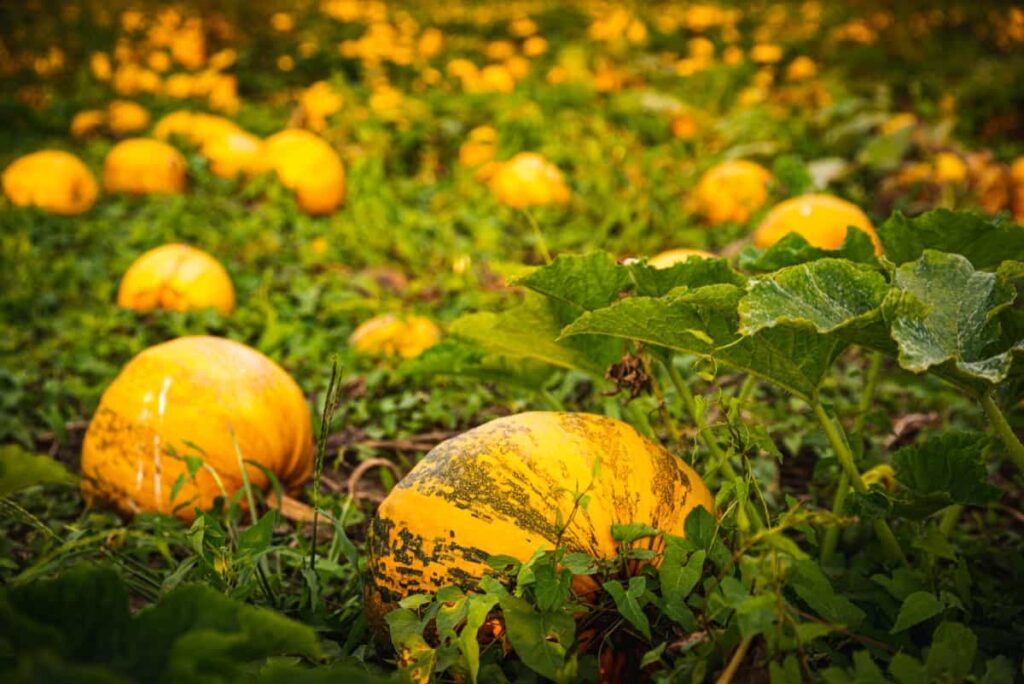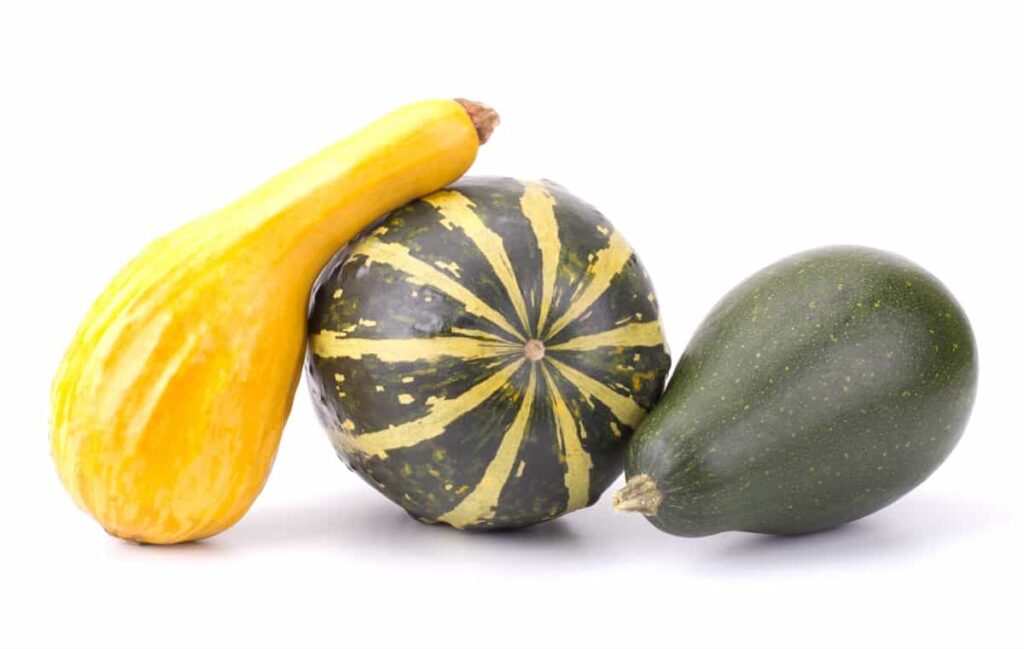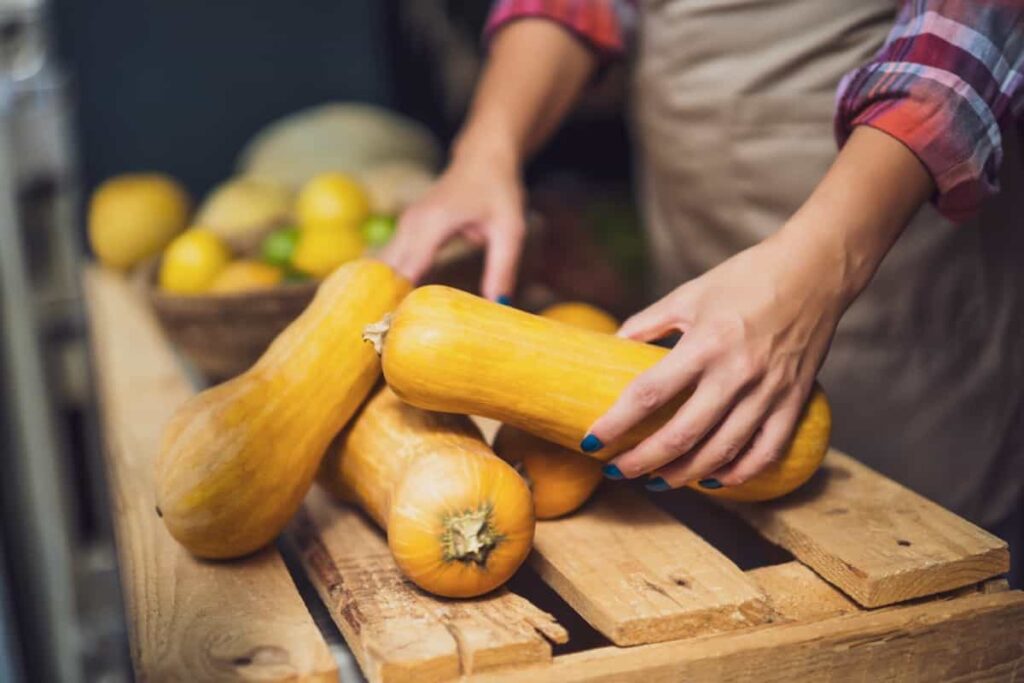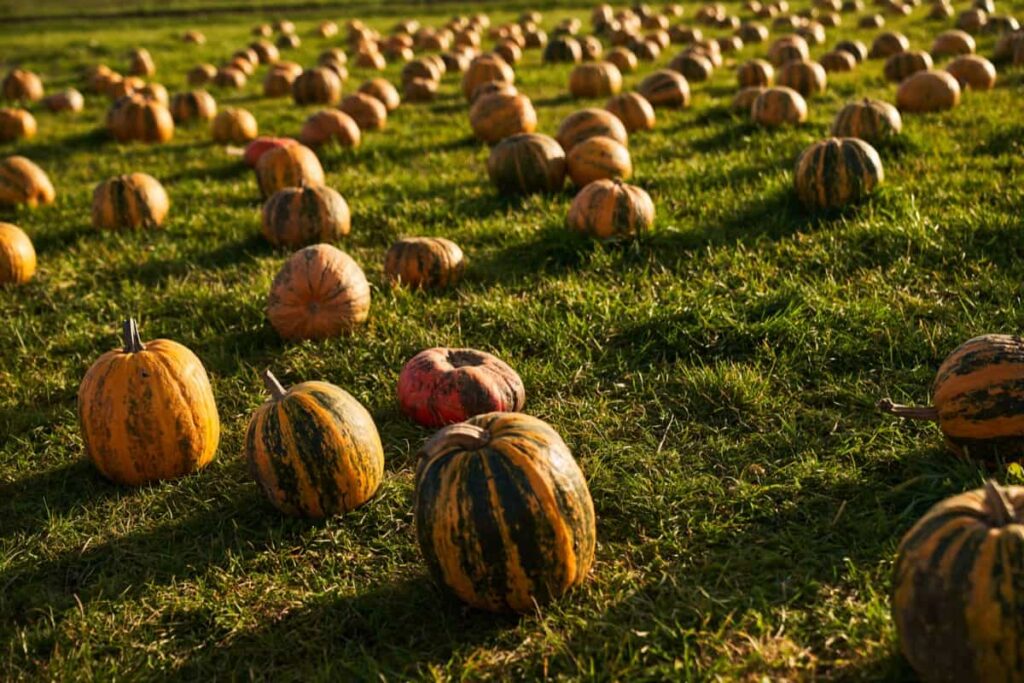Harvesting squash and pumpkins at the perfect time is key to enjoying their best flavor and texture. Whether you’re a beginner gardener or a seasoned grower, understanding the signs of ripeness is crucial. In this guide, we’ll explore the simple yet effective indicators that tell you when your squash and pumpkins are ready to leave the vine and grace your table.

How to Tell When Squash and Pumpkins are Ready to Harvest
Fruit Characteristics of Squash and Pumpkins
Squash and pumpkins are both fruits that belong to the genus Cucurbita. They have many varieties, colors, shapes, and sizes. They are also nutritious and versatile in the kitchen. However, they have some differences in their fruit characteristics that can help you identify them and use them properly.
Maturity Indices for Squash
There are two types of squash: summer squash and winter squash. Summer squash are picked when they are still young and have thin skins that can be eaten. Some of these are crookneck, yellow, zucchini, and pattypan squash. When winter squash are fully grown and have thick, tough skins, they are picked. Some of them are delicata, butternut, acorn, spaghetti, and kabocha.
Squash maturity indices vary depending on the type and intended use. Summer squash should be harvested when small to medium-sized, with bright, uniform colors and firm, smooth skins. Winter squash should have deep, rich colors indicating full ripeness, such as orange, tan, or dark green.
They should have hard, dry skins that resist puncture and dense, starchy flesh suitable for baking or pureeing. Winter squash feel heavy for their size, indicating high moisture content and a long storage life. Dull or faded colors may indicate over-maturity or poor quality. Both types of squash have distinct maturity indices, with summer squash being smaller and winter squash being larger and more flavorful.
In case you missed it: From Garden to Table: A Comprehensive Guide on Growing and Caring for Spaghetti Squash

Maturity Indices for Pumpkin
Pumpkin is a type of winter squash that is usually grown for carving or cooking. There are many varieties of pumpkins, such as jack-o-lanterns, pie pumpkins, miniature pumpkins, white pumpkins, and giant pumpkins. The maturity indices for pumpkins are similar to those for winter squash, but they may vary depending on the variety and the purpose. For carving pumpkins, the maturity indices include:
- Size: Carving pumpkins should be large enough to accommodate a face or a design, usually between 10 to 20 pounds or 12 to 18 inches in diameter.
- Shape: Carving pumpkins should have a round or oval shape with a flat bottom them to stand upright.
- Color: Carving pumpkins should have a bright orange color that contrasts with the dark interior. Some carving pumpkins may also have green or white patches that add interest.
- Texture: Carving pumpkins should have smooth and firm skins that are easy to cut with a knife or a saw. They should also have thin and stringy flesh that can be scooped out easily.
Maturity Indices Cooking Pumpkins
- Size: Cooking pumpkins should be small to medium-sized, usually between 2 to 8 pounds or 4 to 10 inches in diameter.
- Shape: Cooking pumpkins should have a round or oblong shape that fits well in an oven or a pot.
- Color: Cooking pumpkins should have a deep orange color that indicates high sugar content and flavor. Some cooking pumpkins may also have yellow or tan colors that are equally sweet.
- Texture: Cooking pumpkins should have thick and smooth skins that protect the flesh from drying out. They should also have fine and moist flesh that is easy to mash or blend into soups, pies, and lattes.
When Squash and Pumpkins are Ready to Harvest?
Color Change: Squash and pumpkins change color as they ripen from green to yellow, orange, tan, or white. The color change may be gradual or sudden depending on the variety and the weather conditions. A uniform color indicates full maturity, while a partial color indicates partial maturity.
Skin Hardness: Squash and pumpkins develop hard skins as they mature and resist pressure from a fingernail or a knife. A hard skin indicates full maturity, while a soft skin indicates immaturity or over-maturity.
Size and Weight: Squash and pumpkins grow in size and weight as they mature until they reach their optimal size and weight for their variety and type. A large and heavy fruit indicates full maturity, while a small and light fruit indicates immaturity or over-maturity.
Stem or Blossom End: Squash and pumpkins have a stem or a blossom end that attaches them to the vine. The stem or blossom end may change color, fade, or detach as the fruit matures. A brown, dry, or detached stem or blossom end indicates full maturity, while a green, moist, or attached stem or blossom end indicates immaturity or over-maturity.
In case you missed it: Top 10 Best Orchid Potting Mixes in India

Blossom Drop: Squash and pumpkins have male and female flowers that pollinate each other to produce fruits. The male flowers usually drop off after pollination, while the female flowers remain attached to the fruits. A dropped female flower indicates full maturity, while an attached female flower indicates immaturity or over-maturity.
Curling Leaves: Squash and pumpkins have large and broad leaves that shade the fruits from the sun and provide nutrients and water. The leaves may curl up or turn yellow as the fruits mature and divert resources from the leaves. Curled or yellow leaves indicate full maturity, while flat or green leaves indicate immaturity or over-maturity.
Fruit Separation: Squash and pumpkins may separate from the vine naturally as they mature and become ready to harvest. A separated fruit indicates full maturity, while an attached fruit indicates immaturity or over-maturity.
Weather Conditions: Squash and pumpkins are sensitive to weather conditions like temperature, humidity, rainfall, and frost. They may mature faster or slower depending on the weather conditions. A warm, dry, and sunny weather favors faster maturation, while a cold, wet, and cloudy weather favors slower maturation.
Varieties of Squash
- Summer Squash: Includes Courgettes, Patty Pan, Tromboncino, Crookneck, and Straightneck squashes.
- Winter Squash: Comprises Acorn, Butternut, Red Kuri, Spaghetti squashes, and various orange pumpkins.
Harvesting Times
- Summer Squash: Harvested in summer (June/July to September/October) when fruits are small and tender.
- Winter Squash and Pumpkins: Picked in autumn, typically in October. They can be used immediately or stored for winter.
Indicators for Harvesting
- Squash: Best flavor when small; look for rich color and appropriate size.
- Pumpkins: Ready when they have a ripe color, the stem hardens, the skin resists puncturing, and they sound hollow.
Harvesting Techniques
- Squash: Twist or nip off plants; a clean, sharp knife or secateurs can also be used.
- Pumpkins: Requires a gardening knife or shears due to the tough stem. Leave a few centimeters of stem to prevent rot.
Preparing for Storage
- Squash: Not suitable for long-term storage but can be dried or canned.
- Pumpkins: They need curing in a warm, dry, bright location to harden skins and remove excess water, enhancing storage time and flavor.
In case you missed it: 10 Best Compost Brands for Vegetable Plants in India: Organic, Natural, and Quality Compost Brands

Storage Conditions
- Ideal temperature: 10-12 degrees Celsius, not exceeding 15 degrees.
- Store in a cool pantry, cellar, or an unheated room. Alternatives include cooking and freezing or canning.
- Curing and proper storage ensure longevity and taste.
Additional Tips
- Inspect for blemishes or diseases; use damaged fruits quickly.
- Learn about hand pollination in polytunnels for better yields.
- Choosing the right variety and understanding the harvesting and storage processes are crucial for a successful crop.
Conclusion
Harvesting squash and pumpkins at the right time is crucial for maximum flavor and longevity. By understanding the signs of ripeness, such as color change, stem hardness, and hollow sounds, gardeners can ensure a successful harvest. Remember, patience and observation are key to enjoying these autumnal delights at their best.
- Management Pests and Diseases in Your Cotton Field
- Sheep Farming Business Plan for Beginners
- Aquaponic Farming at Home: A Step-By-Step Guide
- Profitable Village Farming Business Ideas in 2024
- High-Yield Aquaculture: Fast-Growing Fish for Farming
- Effective Fish Pond Construction Techniques for Beginners
- Irrigation and Water Management in Pineapple Farming
- Blossom to Harvest: Mastering Flowering and Pollination in Papaya Farming
- Pig Fattening Essentials: From Selection to Sale for Beginners
